DESN 132B — PERSP & RENDERING SYSTEMS II | SPR 2020 | M/W 1:00–3:45PM | HSD105
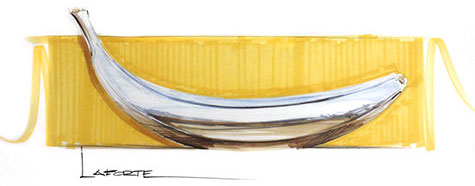
P1 | REVIEW / WARMUP / SKILLS ASSESSMENT
PROJECT OVERVIEW
This is a warm-up assessment to gain insight into the drawing and rendering skill levels of the students upon entering the class. It will help assess what students learned, and recall, from previous courses, semesters, and from transfer.
We should be able to assess if a student has a low degree of retention of previous knowledge, adaptive ability, or advanced skillset
STUDENT LEARNING OBJECTIVES
- The ability to demonstrate present knowledge of design representation systems,
- The ability to demonstrate present skill level of rendering technique,
- The ability to interpret assignment parameters toward a finished presentation,
- The ability to address scale.
GRADING AND EVALUATION RUBRIC
The following Rubric will apply in assessment of the student's work product, presentation, and/or process:
REFERENCES AND/OR INSPIRATION
http://www.archdaily.com/399834/sketching-in-the-digital-age-more-relevant-than-ever/
Visit this page for more on basic mechanics
GETTING STARTED
Using the guide below, content from class discussion and review, and your present understanding of orthographic drawing and perspective
From around your home and daily life, describe through drawings AT LEAST 2 objects of each type—
2 – Cube/Rectangular Forms. ex. an boxy chair, rectangular sofa, a toaster, your printer/scanner, etc.
2 – Pyramidal Forms. ANYTHING but the Blue Pyramid on Campus, be creative, a lamp, a vase, a stool with legs slopping inward, etc.
2 – Cylindrical Forms. ex. perfume bottle, hand soap dispenser, coffee mug, sport bottle, etc.
2 – Conical Forms. ex. a vase, flower pot, shampoo bottle, a lamp, etc.
2 – Spherical Forms. ex. a toy character's head, a salt shaker, Pom drink bottle, etc.
If you're short on ideas from around your home, go for a walk at the mall,
along 2nd Street, visit Target, or other places.
In Top View and Front/Side View, show in two different states, once straight on, another with the object rotated off the plane.
Render Top and Front/Side views in greyscale.
Render Perspective view with materiality in color.
Organize your objects and sheets using classical drawing relationships—
top, front/side, perspective.
Use the guide below, along with right sidebar, and your books or other guides to help you in your representation.
Drawings do not need to be technically drawn.
Drawings do not need to have absolute precision of dimensions at scale, HOWEVER they MUST have reasonable, believable proportional relationships across all views.
Even a flat, relatively uninteresting object can be rendered in an interesting, embellished way. Your job as a designer is get your client (me) excited about your design, even when they are minimal, like say making a chrome banana. Why not? Ever seen Jeff Koons' chrome sculptures?
When you really look, you'll find that most designed
objects are actually relatively simple geometries
defined uniquely through subtle articulations of
materials, detailing, and proportions.
If you know shadow casting and/or mirror reflection
logic, feel free to demonstrate this in your work.
Remember, do not draw/render at actual size. A tiny object like an earring needs to be enlarged, while a sofa is reduced, both are being "scaled", for design representation. Drawing large makes for much stronger work when scanned and scaled down, rather than drawing small and scaling up only to discover lines are super thick and there's a lack of detail.
You may choose to use Photoshop to clean up and organize your sketches.
You may sketch using a tablet or other digital design tool, but not a CAD modeler, sketch tool only. Be sure you are already skilled with the tool.
DELIVERABLES
Final on 11x17" Paper, or a neutral toned Canson with titleblock
Paper orientation is up to the student, but in most cases a horizontal orientation may work best. All sheets MUST be consistent, ie. all horizontal or all vertical, adjust as necessary and accordingly.
Include an annotations of material details, parts, and/or finishes.
Include overall dimensions of your objects.
TUTORIALS & HOW-TO GUIDES

Sample basic values on common form types
Examples in perspective in color and with materiality applied
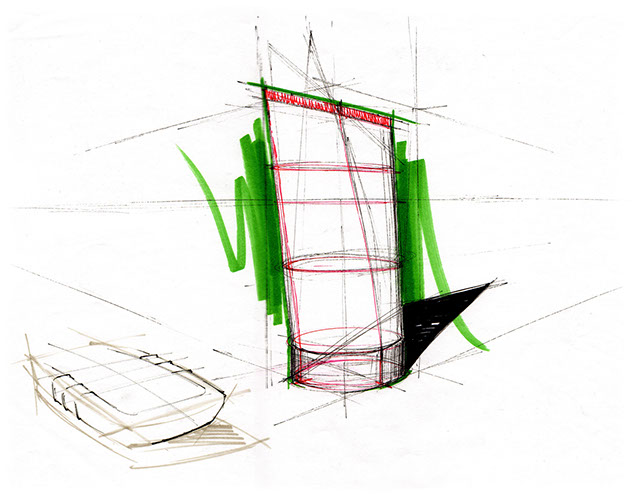
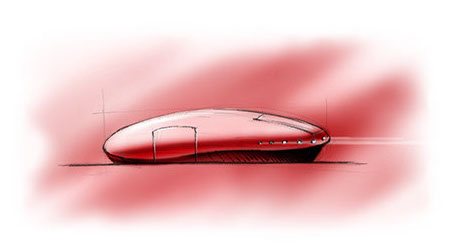
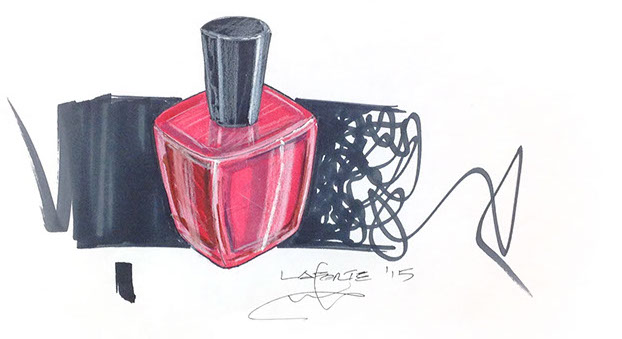
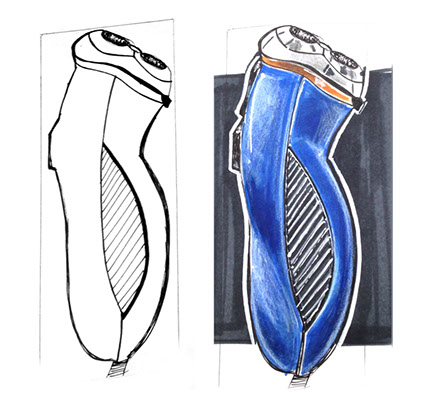
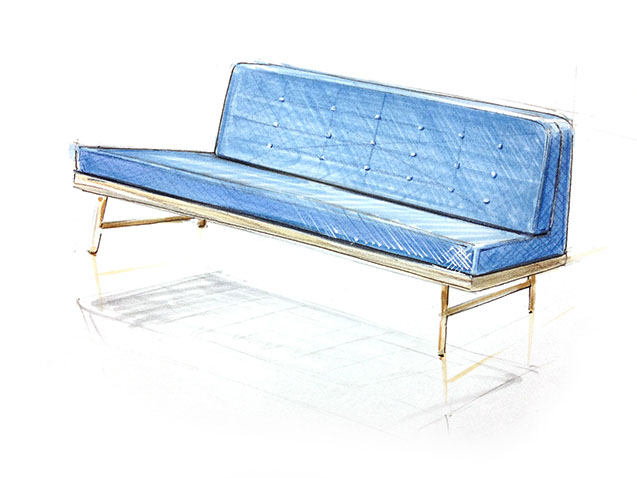
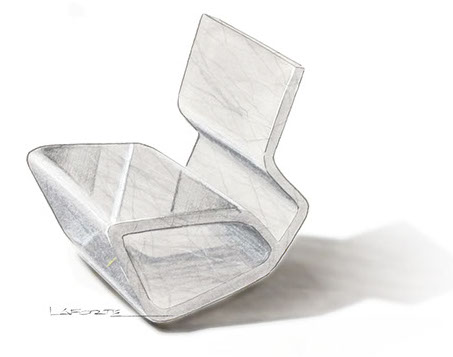
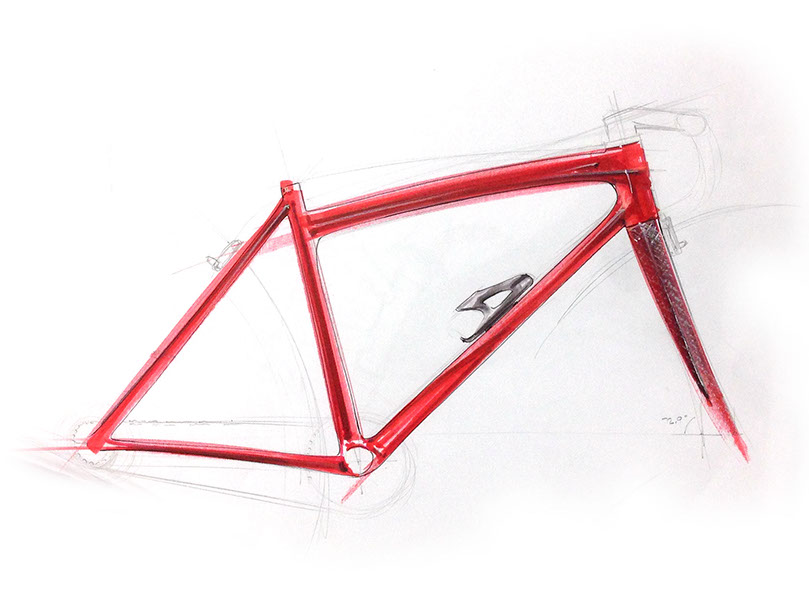

An example of layout options using "classical" organizational conventions
You do not have to draw every component or detail of a complex thing like a bicycle, focus on one part that interests you, such as the frame, seat, handlebar/stem/head tube
Here are a few organizational options using a toy tractor. Note the perspective needs to be in color.
Your layout may change depending on the scale and proportions of your objects/sketches.
Note that there are pros and cons to each organization. Often the best layout depends on the nature,
ie. tall, short, long, etc. of your object and how many drawings you can comfortably fit on your layout.
Do NOT try to fit all your drawings on one sheet of paper. You will need a minimum of two, but no more than six.
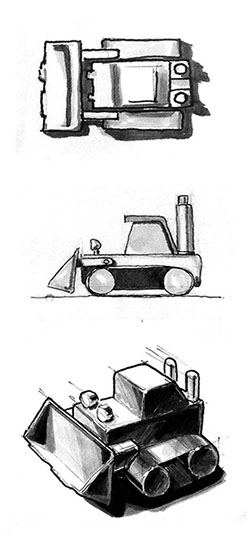
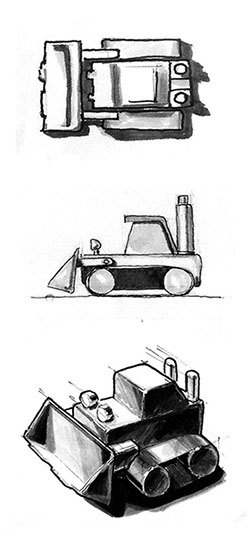
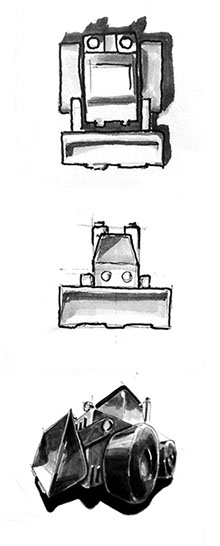
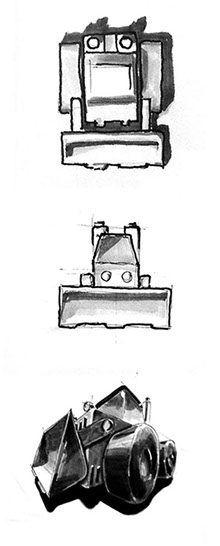
TOP VIEW
TOP VIEW
TOP VIEW
TOP VIEW
FRONT VIEW
FRONT VIEW
FRONT VIEW
FRONT VIEW
PERSPECTIVE VIEW
PERSPECTIVE VIEW
PERSPECTIVE VIEW
PERSPECTIVE VIEW
PROJECT 1 | 132B | SPRING 2018 | PROFESSOR LAFORTE
STUDENT'S NAME

FRONT VIEW
PERSPECTIVE VIEW
SIDE VIEW
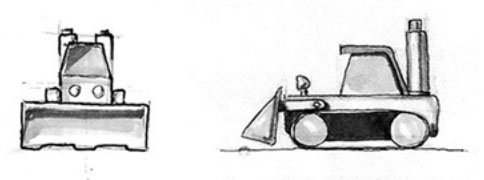
FRONT VIEW
SIDE VIEW
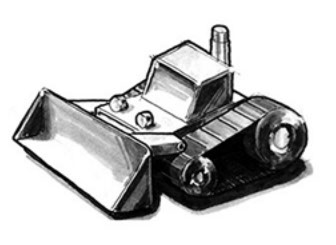
PERSPECTIVE VIEW
PROJECT 1 | 132B | SPRING 2018 | PROFESSOR LAFORTE
STUDENT'S NAME
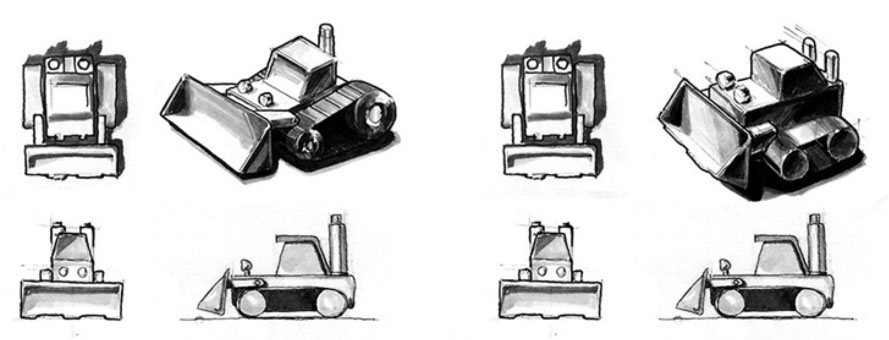
FRONT VIEW
FRONT VIEW
TOP VIEW
TOP VIEW
PERSPECTIVE VIEW
PERSPECTIVE VIEW
SIDE VIEW
SIDE VIEW
PROJECT 1 | 132B | SPRING 2018 | PROFESSOR LAFORTE
STUDENT'S NAME
^
* Estimate only. See instructor and calendar for specific due dates. Summer Session schedule is more compressed with one week equal to approximately two and half semester weeks.
CSULB | COTA | DEPARTMENT OF DESIGN | BIO

Questions, feedback, suggestions?
Email me with your recommendations.
©2020 Michael LaForte / Studio LaForte, All Rights Reserved. This site and all work shown here is purely for educational purposes only. Where ever possible student work has been used or original works by Michael LaForte.
Works by professionals found online or in publication are used as instructional aids in student understanding and growth and is credited everywhere possible.